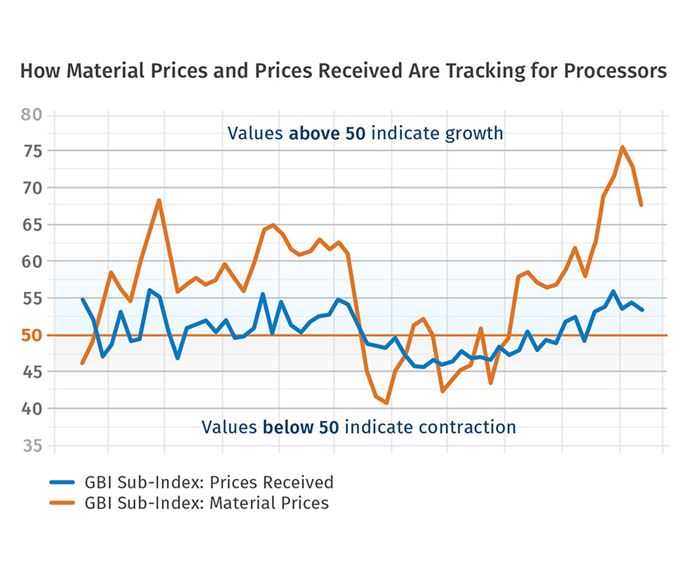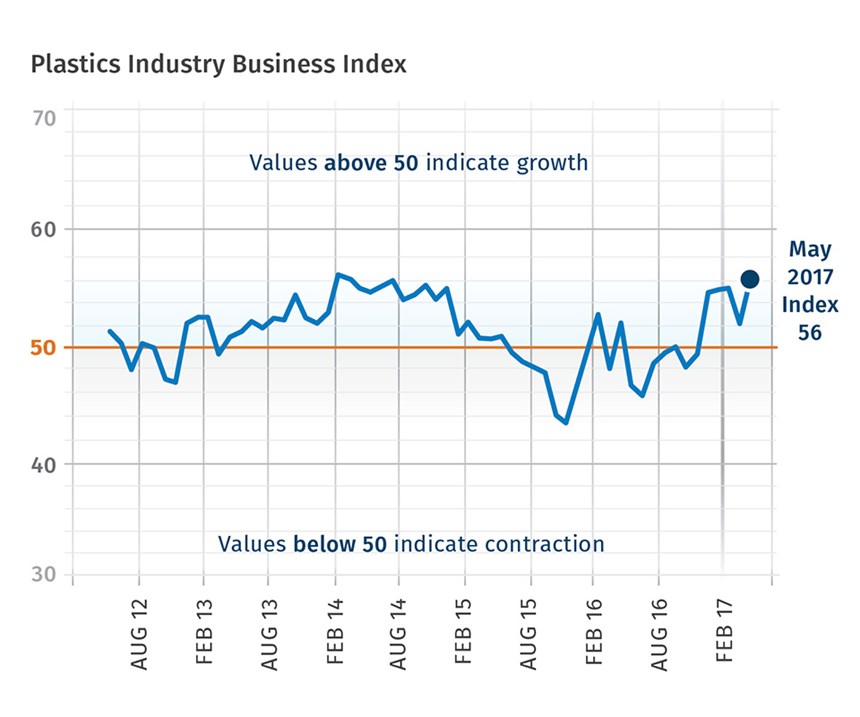May’s Index: 56
Industry has grown steadily over last six months.
The plastics industry expanded again in May, according to research conducted by Gardner Business Intelligence. In fact, the May index of 56 is the highest index value recorded since 2014 and 7.4% higher than a year ago. Over the last six months in particular, the industry has experienced significant growth.
Two trends stood out in reviewing May’s numbers:
Pricing Divergence: The index for material prices is rising significantly faster than the index for finished-products prices (see top graph). This divergence could create pricing pressure and margin compression for processors, especially since the backlog index continues to hover around the 50 mark.
Sales Expectations: The indexes for new orders and future business expectations have both turned positive since the start of 2017. The index for future business has improved by more than 10% in the last six months, while the index for new orders has increased by nearly 5% in calendar year 2017.
ABOUT THE AUTHOR: Michael Guckes is the chief economist for Gardner Business Intelligence. He has been performing modeling and forecasting work since 2004, when he was an economist for the state of Ohio. His econometric work was used to make markets more efficient and to guide state legislation. He received his BA in Political Science and Economics from Kenyon College and an MBA from The Ohio State University. Contact (513) 527-8800; mguckes@gardnerweb.com; gardnerweb.com.
Related Content
-
Latest Data on Bottled Water Shows Continued Strong Growth
Bottled water’s volume surpassed soft drinks for the first time in 2016 and has done so every year since.
-
‘Monomaterial’ Trend in Packaging and Beyond Will Only Thrive
In terms of sustainability measures, monomaterial structures are already making good headway and will evolve even further.
-
How to Optimize Injection Molding of PHA and PHA/PLA Blends
Here are processing guidelines aimed at both getting the PHA resin into the process without degrading it, and reducing residence time at melt temperatures.

.jpg;width=70;height=70;mode=crop)












